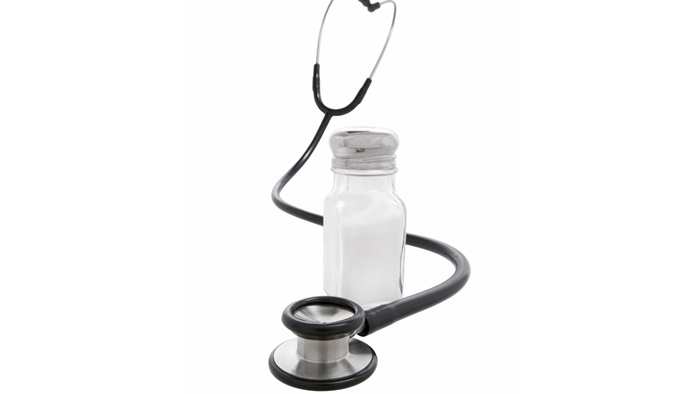
Lately, there has been a great deal of discussion about the amount of sodium that most Americans consume in their diet. The bottom line: it’s too much.
The controversy was caused by an article written in The New York Times which reported on the recent findings published by the Institute of Medicine. The article suggested that further reducing sodium intake below the recommended value of 2,300 milligrams (mg) per day could not be supported with scientific evidence and was not helpful. Currently, most Americans consume around 3,400 mg of sodium a day. While the article concluded that there was no evidence of benefits to reducing sodium consumption to below 2,300 mg a day, previous guidelines have actually supported reducing sodium intake to much lower: to 1,500 mg a day, according to the American Heart Association. The article overlooks these prior guidelines and risks misinforming Americans about the dangers of not reducing their high intake of sodium.
The current average daily recommended intake of sodium is 2,300 mg per day, but if you look at some recent work completed by the Centers for Disease Control and Prevention, they found that specific populations of people could greatly benefit from further reductions in sodium from 2,300 mg to 1,500 mg: people with hypertension, diabetes, heart disease, and kidney disease and African Americans. The research found that approximately 85% of the American population was consuming more that 2,300 mg of sodium per day—therefore, whether you are at high risk or not, you still need to reduce your sodium intake dramatically.
In my opinion, the recommendation of lowering the daily sodium intake from 2,300 mg to 1,500 mg in susceptible groups makes a great deal of sense. However, what the press fails to recognize is that the majority of North Americans are not even close to achieving the recommended daily amount of sodium—the average American consumes 3,400 mg of sodium per day! In fact, many people obviously consume much more sodium than this every day.
I think there are some people who are missing the point in this case!
In general terms, the decrease in sodium intake to 1,500 mg from 2,300 is definitely beneficial for at-risk groups of people, but the majority of people need to reduce their current intake of sodium by at least one gram per day just to meet the recommended intake for sodium. In my opinion, there is a definite benefit to lowering sodium intake to the desired, recommended levels. In some cases, the amount of sodium needs to be drastically reduced in individuals who are experiencing chronic disease, are salt sensitive, or have hypertension which is not being adequately controlled.
As a public health issue, this is quite significant, because the amounts of sodium currently consumed greatly exceed our needs. The typical Western diet is loaded with sodium; even some of the so-called weight loss foods and health foods contain large amounts of sodium.
We should focus on trying to get people to meet the current sodium recommendations. This can be accomplished by reading labels, asking questions, and trying to consume a diet composed of fresh food and devoid of processing, refining, and additives. Try to also limit your consumption of fast food, junk food, frozen entrees, and canned foods which contain a lot of sodium. You’ll reap a lot of benefits.
Source(s):
“The new salt controversy,” Harvard School of Public Health web site; http://www.hsph.harvard.edu/nutritionsource/the-new-salt-controversy/, last accessed June 24, 2013.
“Usual sodium intakes compared with current dietary guidelines — United States, 2005-2008,” MMWR Morb Mortal Wkly Rep. October 2011; 60(41): 1413-7.
Kolata, G., “Panel finds no benefit in sharply restricting sodium,” The New York Times web site; http://www.nytimes.com/2013/05/15/health/panel-finds-no-benefit-in-sharply-restricting-sodium.html?src=rechp&_r=0, last accessed June 24, 2013.













